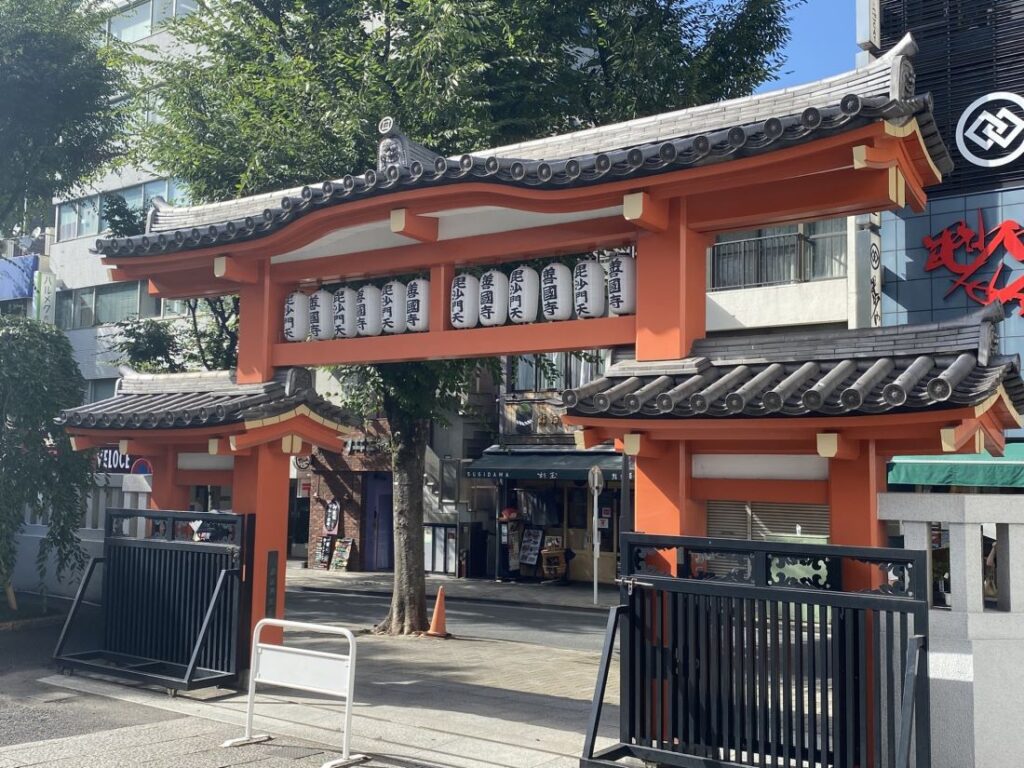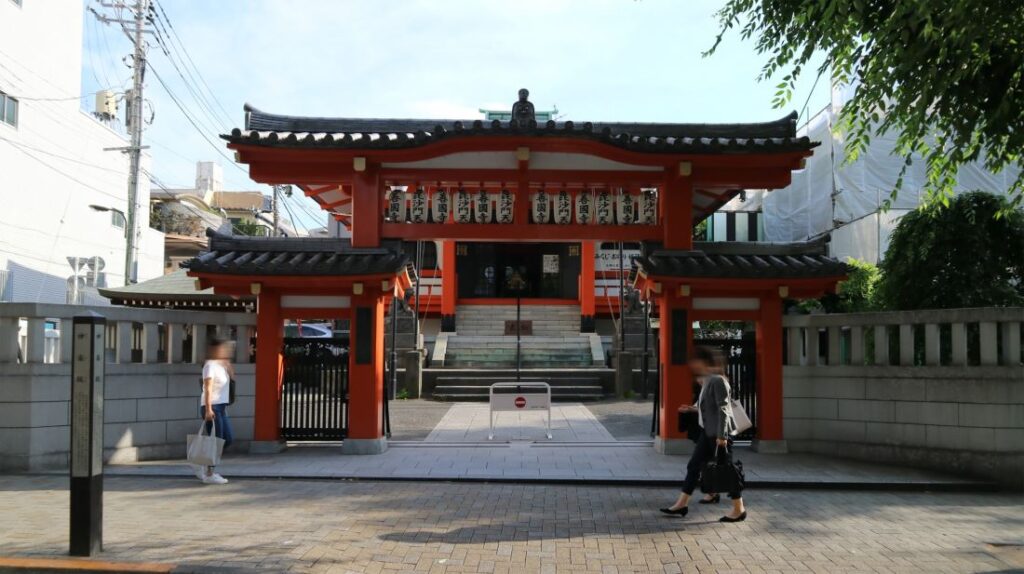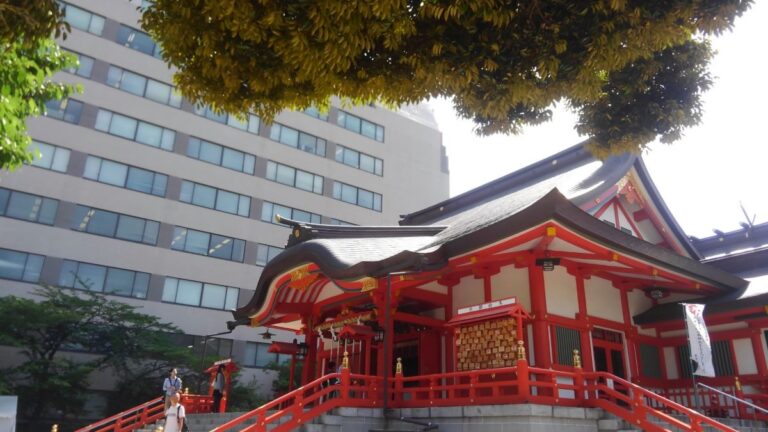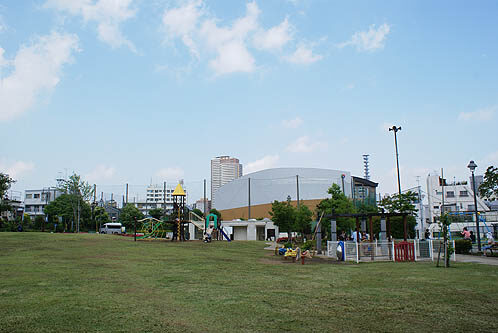If you’re looking for a peaceful and serene place to visit in Tokyo, then you should definitely check out Zenkoku-ji Temple. Located in the Kagurazaka area of Shinjuku-ku, this vermilion temple was originally constructed by Tokugawa Ieyasu in 1595 in Nihonbashi Bakurocho and was moved to its current location in 1792.

Zenkoku-ji Temple is dedicated to Bishamonten, one of the Seven Lucky Gods of Japan, and is known for its beautiful architecture and peaceful atmosphere.
The temple features a stunning main gate, a bell tower, and other buildings and structures. You’ll also find a number of statues and other religious artifacts on the temple grounds.

With its beautiful architecture, peaceful atmosphere, and interesting history, it’s worth a visit.
History

Zenkoku-ji Temple has a long and storied history dating back to 1595. It was constructed by Tokugawa Ieyasu in Nihonbashi Bakurocho, and after fires and relocations, the temple was moved to its present location in Kagurazaka in 1792. Since then, the temple has become a beloved neighborhood symbol and a popular destination for visitors.
During the Edo period, Zenkoku-ji Temple was known as “Bishamon-Sama in Kagurazaka,” and it flourished as a center of the town. The temple is dedicated to Bishamon, one of the Four Heavenly Kings in Buddhist lore, and it continues to serve as a place of worship and reflection for all.
Over the years, Zenkoku-ji Temple has undergone numerous renovations and restorations to maintain its historical significance and cultural heritage. Today, the temple boasts a beautiful main hall, a stunning pagoda, and other structures and artifacts that showcase its rich history and architectural beauty.

Cultural Significance
As one of the oldest and most important temples in Tokyo, Zenkoku-ji Temple has a rich cultural significance that has been preserved throughout the centuries. The temple is dedicated to Bishamon, one of the Four Heavenly Kings in Buddhist Lore, and is also one of the Seven Lucky Gods.
Inside the temple hall, you will find a Bishamon statue that has been designated as an official cultural asset. While photography is not allowed inside the halls, you can still admire the intricate details of the statue up close.
Aside from the religious significance of Zenkoku-ji Temple, it also played a role in the development of Tokyo. The temple was constructed by Tokugawa Ieyasu in 1595 in Nihonbashi Bakurocho. After fires in 1670 and nine shops before the gates, it was moved to its present home in 1792 and became the center of the town in Kagurazaka and flourished as a hub for cultural exchange.
Today, Zenkoku-ji Temple continues to serve as a cultural hub for the Kagurazaka neighborhood. It is a popular destination for all, and is especially busy during the annual Kagurazaka Matsuri festival.
Visiting Zenkoku-ji Temple is not only a spiritual experience but also a cultural one. You can learn about the history of Tokyo and the significance of Buddhism in Japanese culture all in one place.
Visiting Zenkoku-ji Temple

When you visit Zenkoku-ji Temple in Shinjuku, Tokyo, you’ll be greeted by a serene atmosphere and beautiful architecture. The temple is easily accessible by subway, just a 5-minute walk from exit B3 of Iidabashi Station on the Tokyo Metro Yurakucho, Namboku, and Tozai lines, as well as the Toei Oedo line.
Once you arrive, take a moment to appreciate the peaceful surroundings and the intricate details of the temple’s design. Zenkoku-ji Temple is a great place to escape the hustle and bustle of the city and find some inner peace.
Festivals and Events
The most famous festival at Zenkoku-ji is the Kagurazaka Machi Tobi Festa, held annually in October. This festival features traditional Japanese dance performances, live music, street food, and a lively atmosphere that draws all. If you’re lucky enough to be in Tokyo during the festival, be sure to check it out.
Another popular event at Zenkoku-ji is the Gokaicho, held every seven years. This event is a special pilgrimage to the temple that attracts thousands of visitors from all over Japan. During the Gokaicho, the temple’s hidden Buddha statue is unveiled to the public, making it a once-in-a-lifetime opportunity to see this sacred treasure.
Other events at Zenkoku-ji include the New Year’s Eve bell-ringing ceremony, where you can join in ringing the temple bell to welcome the new year, and the Setsubun festival, where you can participate in bean-throwing rituals to drive away evil spirits.






